How To Use Social Proof in Your Marketing Campaigns
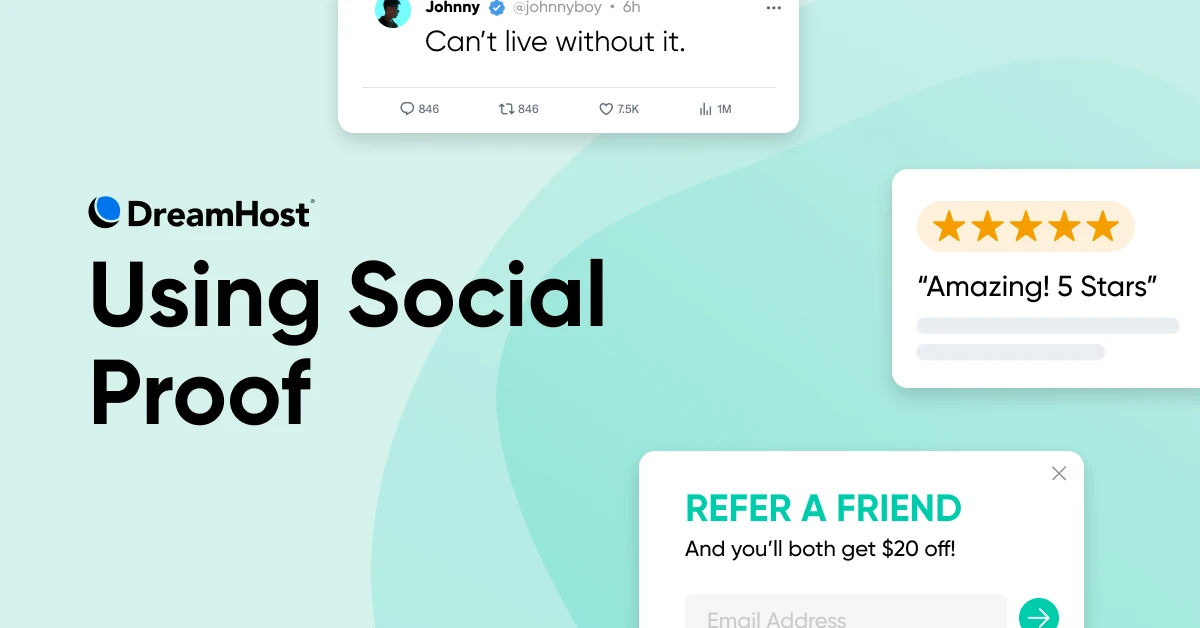
Picture the scene: you’re shopping online for a new desk. Your cursor hovers between two very similar worktops. Both brands claim that their product is the most stylish, ergonomic, and durable on the market.
How do you choose?
Well, you might look at the customer ratings. Perhaps you would search Google for a professional review, or ask a colleague who already owns one of the desks. You might even take note of which desk your favorite YouTuber is using.
In marketing terminology, these are all examples of social proof. In other words, it’s the idea of seeking a second opinion on the sales pitch to confirm (or disprove) it.
If you own a business, you need to be aware of this psychological phenomenon. With a bit of work, you can use social proof to persuade more potential customers to make a purchase.
In this guide, we’re going to take a closer look at social influence and persuasion — and show you exactly how to use this marketing technique to send your conversion rate through the roof!
What Is Social Proof Exactly?
There are actually two definitions for social proof.
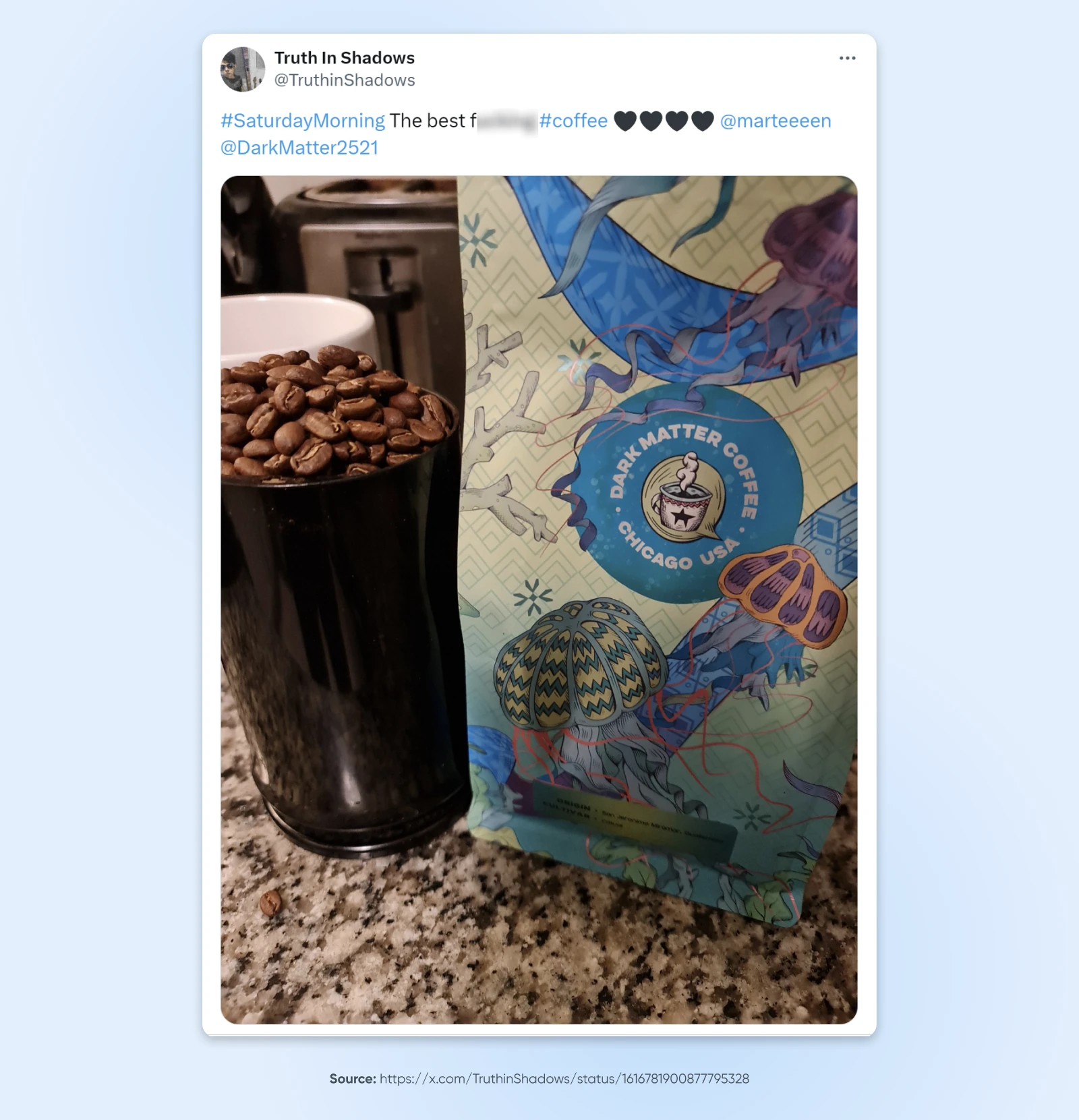
Let’s see if we can make that clearer with some examples:
- Customer reviews: Everything from customer reviews for your store to feedback on sites like G2, Facebook, and Yelp.
- Media mentions: Your business might have been featured on national TV, or maybe a website published a hands-on review of your product.
- Client testimonials: Happy customers are often willing to share some nice words about your brand or product.
- Case studies: Some businesses use those nice words to build an entire case study, showing how they helped a client.
- Social media mentions: When people really like your product or service, they might give you a shout-out on social media.
- Influencer marketing: A big name in your industry is seen using your product!
- Research studies: Research that proves the importance of products or services in your niche.
- Independent testing: Some companies commission independent tests to verify specific claims about product performance.
- Trade affiliations: In some industries, being a part of a trade association or scheme can make your brand appear more trustworthy.
There are many forms of social proof, as you can see. The common thread, though? How they can influence new customers.
Why Social Proof Is So Powerful
Social proof is a concept that psychologist Robert Cialdini popularized in his 1984 bestselling book, Influence: Science and Practice.
Cialdini basically suggested that we’re wired to follow the crowd. It’s like our brains have a shortcut: if everyone else is doing something, it must be good.
Think about it:
- You’re more likely to laugh at a joke if others are cracking up.
- You’ll probably download an app with millions of users over one with just a few.
- You might even cross a busy street if you see everyone doing it.
The science of persuasion can explain these behaviors. There are three key psychological principles at play here:
- Herd mentality: We’re social animals. Following the group? It’s in our DNA.
- Wisdom of the crowd: When many people agree on something, we figure they might be onto something.
- FOMO: The fear of missing out is real. You’re more likely to buy a gadget if your friends rave about it.
If you want to dive deeper into these concepts, it’s definitely worth picking up Robert Cialdini’s book!
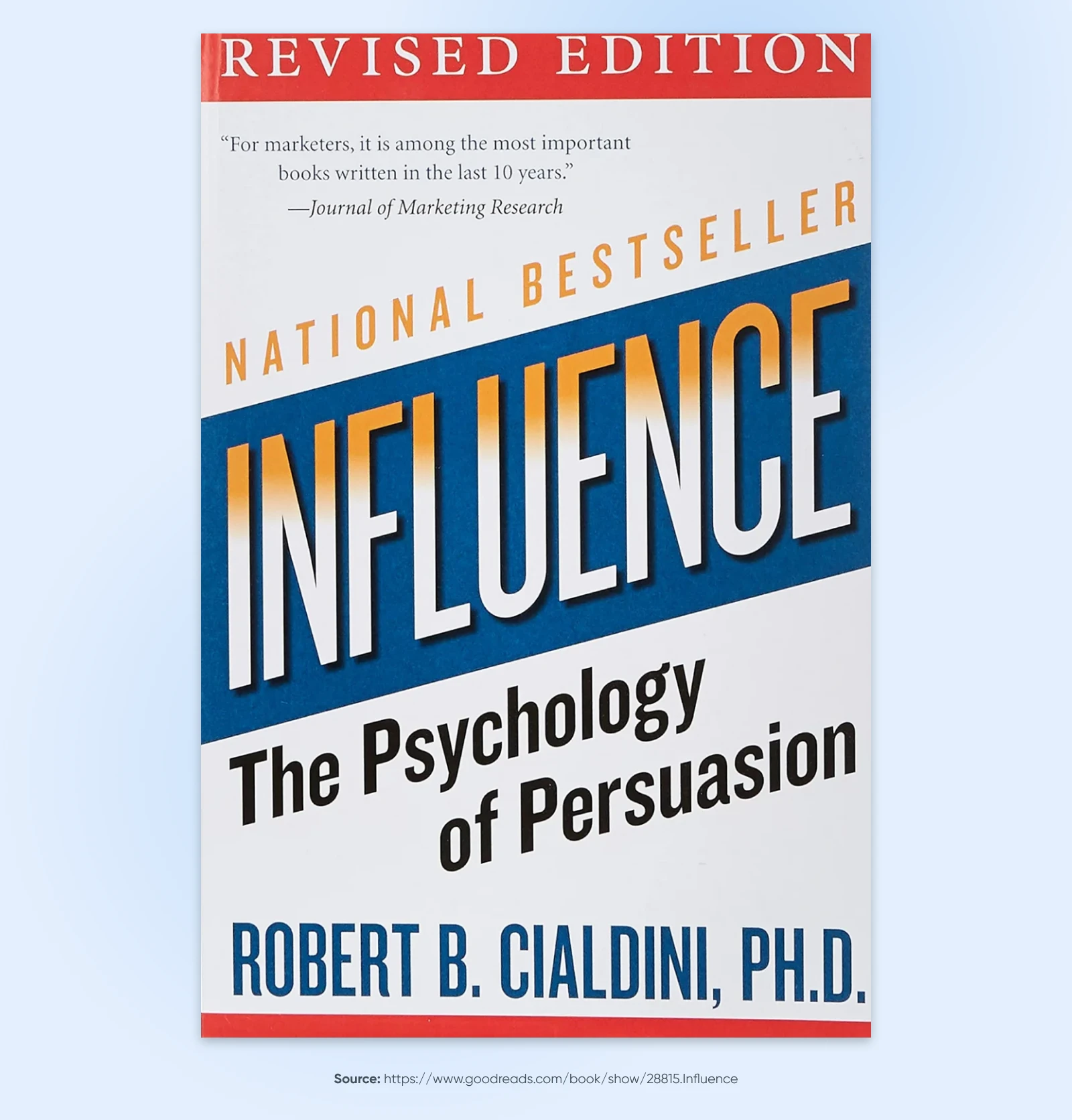
The Numbers Say That Social Proof Works
This all sounds great on paper. But, how does social proof affect real-life behavior?
Well, there’s a mountain of evidence to back up social proof as a digital marketing play:
The overall picture is clear: social proof is a killer marketing strategy.
12 Ways To Incorporate Social Proof in Your Marketing Strategy
Wanna get in on this powerful marketing hack? Let’s take a look at some easy ways to get started!
1. Showcase Customer Reviews
Whenever a customer says something nice about your business, share it!
Place reviews throughout your website, especially on e-commerce product pages and near call-to-action buttons. This can provide the extra push needed to get a lead to convert.
If you start building up a library of nice comments, you could even create a dedicated testimonials page.
You can also share customer reviews on social media. We recommend converting reviews into graphics — because images are easy to share across platforms, and they tend to be more memorable than text alone.
Here are some more key tips for sharing positive reviews and testimonials:
- Include the reviewer’s name and photo: This adds authenticity to the review and makes it more relatable for potential customers. (Make sure to ask their permission, though.)
- Encourage customers to leave reviews: Send follow-up emails after purchases or service completions, ask for a review, and make the process as easy as possible.
- Don’t hide negative e-commerce reviews: In terms of shopping online, consumers don’t trust perfection. While you probably won’t want to highlight negative reviews on your home page, avoid removing criticism from your sales pages.
2. Add Customer Logos to Your Website
If you’re in the B2B world, try featuring some customer brand logos on your homepage or landing page.
This technique works particularly well if you have some well-known clients. At a glance, potential customers can see you have a strong track record. This is a great way to earn their trust.
Here are a few tips for including customer logos on your website:
- Choose relevant logos: Think about what would impress your ideal customer.
- Use high-quality logos: Some brands have a media kit that contains crisp, high-resolution design assets.
- Place the logos in a prominent location: Put them near the top of your landing page.
- Consider adding links: Help your visitors to learn more about the featured brands.
- Always get permission: Make sure your customers are happy to be featured to avoid disputes down the line.
Some companies, like Glide — a no-code app development tool — show off their clients using a horizontal scroll. This gives you the option to add more customer logos without cluttering the page.
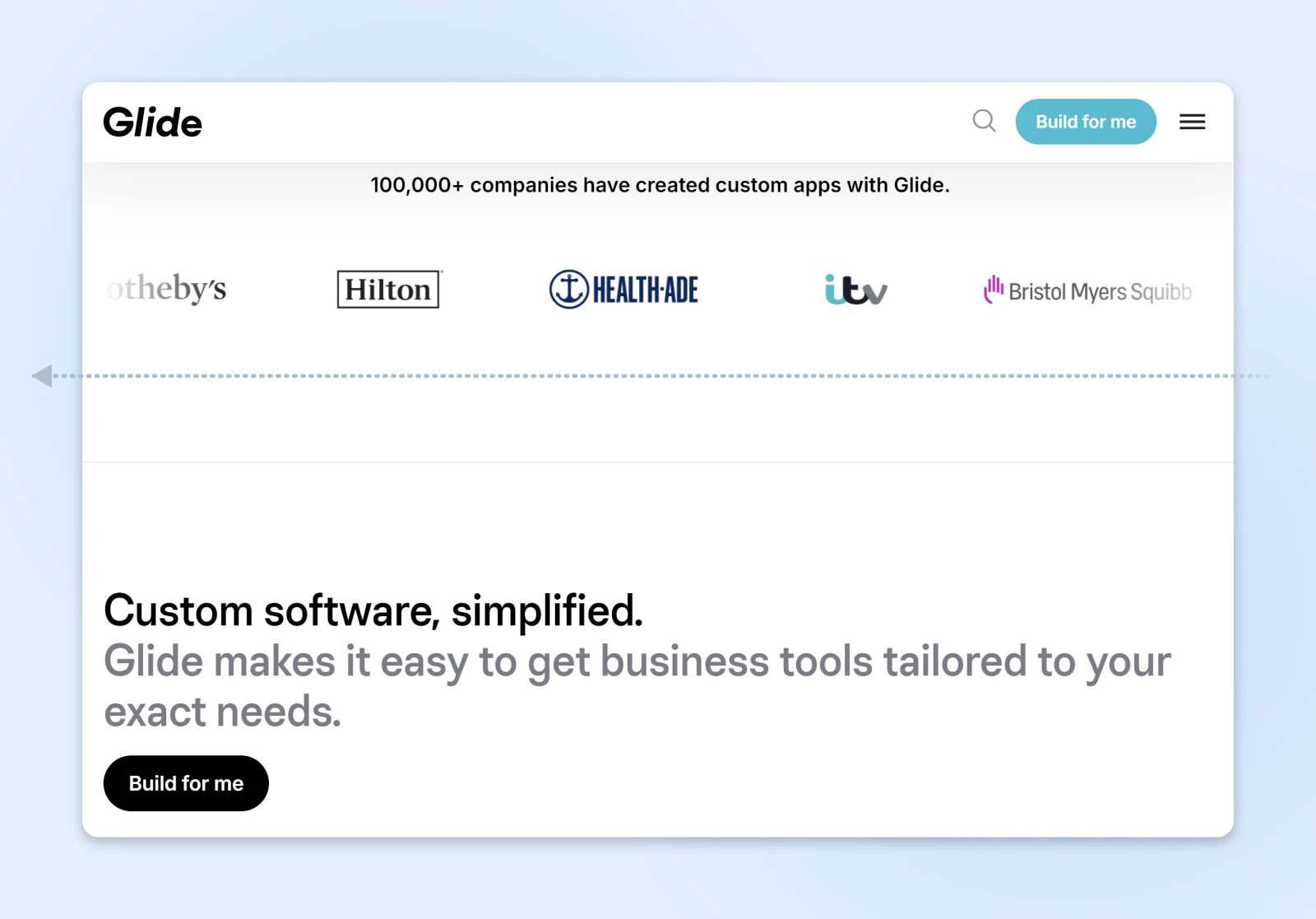
3. Promote Positive Social Posts
While testimonials can be effective as social proof, they only work when potential customers truly believe in their authenticity. And if reviews exclusively appear on your website, some visitors will harbor doubts about home-field advantage.
The best way to prove that customers really do like you is by leveraging social media.
When a customer posts about a positive experience, be sure to share their post on your business accounts. You can also embed these posts directly on your website.
There is a fairly low chance that you’ve set up an army of fake accounts to promote your business — and we wouldn’t recommend it at all — so new customers are more likely to believe in good reviews.
If you want to use social media for social proof, follow these tips:
- Listen out for mentions: Customers won’t always correctly tag your business account, so it’s important to look out for other mentions. Perform manual searches regularly or set up a social listening tool like Sprout Social or Hootsuite.
- Don’t use too many embeds on your website: While sharing social reviews is good, embedded content can slow down your page loading.
- Update embedded content regularly: Social media moves fast, so a post from five years ago is going to look outdated.
4. Show Off Your Number of Customers
Sometimes, the most potent form of social proof is cold, hard numbers.
Well, let’s be more specific. If you have a lot of customers already, don’t be shy about it. When potential customers see that a lot of people have chosen your business, it creates a sense of reliability and popularity.
These don’t necessarily even have to be paying customers, either. Many digital-first businesses highlight the number of users they have or their social follower counts.
This technique is best used if you’ve racked up some big numbers. However, a relatively small figure can still make a big impact.
Here’s how to nail it:
- Highlight major milestones: If you’ve reached a significant number of customers or followers, make it a feature on your homepage or About Us page. Post across your social networks to celebrate the milestone, too.
- If possible, use real-time data: Consider using a dynamic counter that updates in real-time to add an extra layer of authenticity. For instance, some plugins can show the number of live shoppers browsing your online store.
- Make sure to provide appropriate context: Simply stating a number might not be enough – Explain why the figures are important. For example, “Join over 10,000 satisfied customers who trust us for their daily stationery needs.”
For example, Docusign boasts “a million customers and a billion users” on one of its product pages.
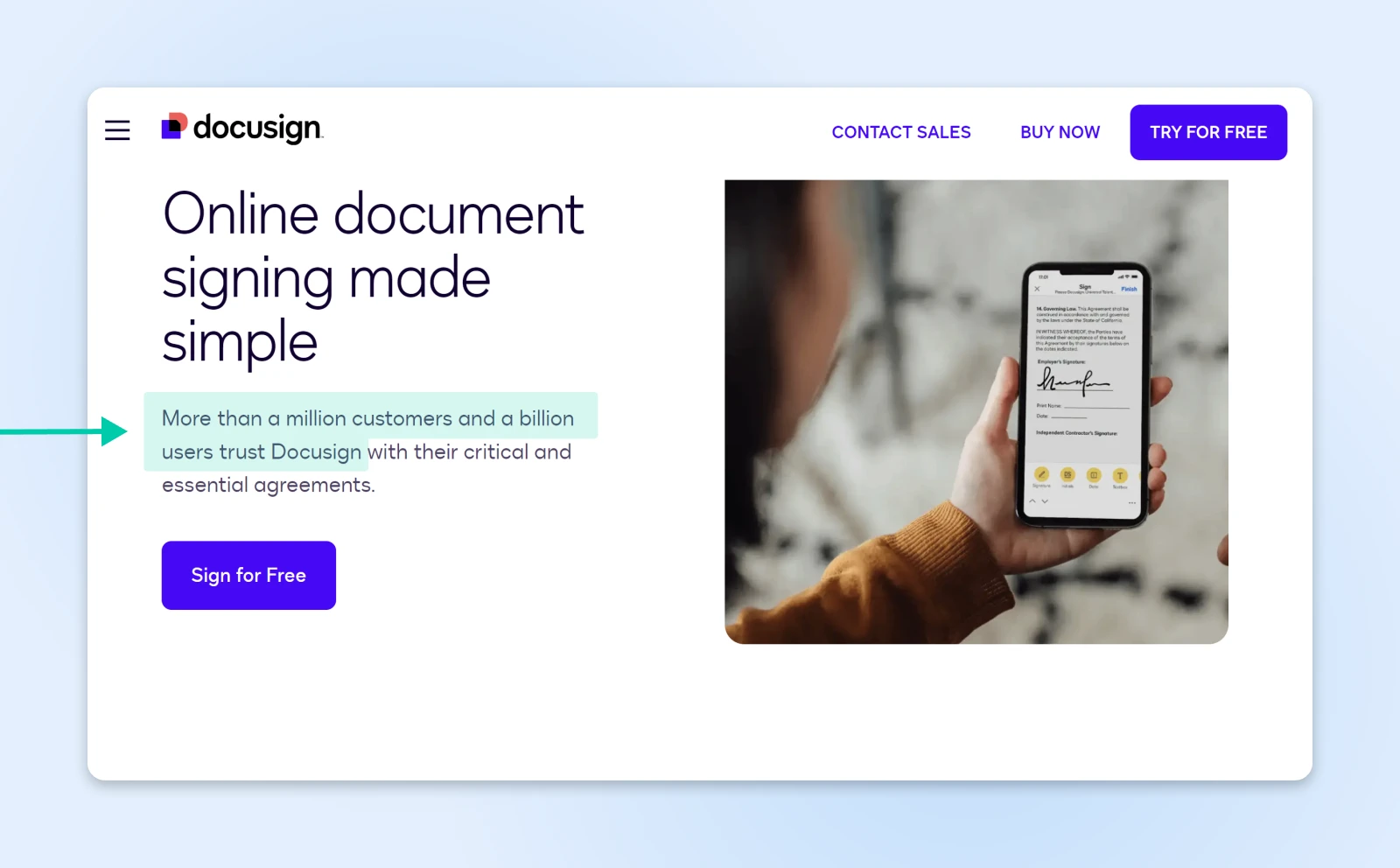
5. Highlight Press Coverage
Most newspapers and magazines only have a readership of a few thousand. Still, being featured in a major publication is a big deal.
Why? Because it’s like a stamp of approval. Customers instinctively know that a big media outlet wouldn’t be highlighting your company if you had a spotty reputation.
To capitalize on this, promote any press coverage you receive. You can do this by linking to the piece on your social media accounts.
Once you’ve racked up a few mentions, you could also create an “As Seen In” section on your website (the footer is a good place).
Here’s how to do it right:
- Choose recognizable logos: Stick to well-known publications your target audience will recognize.
- Keep it clean and simple: A basic row of logos is often more effective than cluttered quotes—link to the articles. Let curious visitors read the full story.
- Keep it updated: Fresher coverage is more impressive than old news.
6. Look Out for Expert (and Celebrity) Endorsements
Why do infomercials always feature that one doctor in a white coat? It’s because expert opinions carry weight.
When respected individuals in your industry vouch for your product or service, it tells customers that you’re the real deal.
Of course, explicit endorsements often come with a big price tag attached. But there are other ways to associate your brand with a big name.
For example:
- A famous athlete uses your sports equipment.
- You send a celebrity your product free of charge, and they send a thank you message with a positive review on social media.
- An expert in your industry is a customer, and they’re willing to state that publicly.
You don’t even need an expert endorsement. It only takes one mention of your product by a megastar for new customers to flock to your business.
A good example is New Ho King. This Chinese restaurant in Toronto has seen sales rocket since the venue was name-dropped in Drake and Kendrick Lamar’s music!
7. Work With Micro-Influencers
Influencer marketing isn’t just for big brands with huge budgets.
Small businesses can also leverage the power of micro-influencers — people with a smaller but highly engaged following in your niche.
Why does this work? Because people buy from people. When a reliable source recommends your product or service, their audience is more likely to consider a purchase.
It’s like getting a recommendation from a trusted friend!
Here are a few tips for successful micro-influencer collaborations:
- Find the right fit: Look for influencers whose values and audience fit with your brand. Getting this part right is tricky, but it’s worth the effort. You wouldn’t want to target a vegan influencer for dairy products, for instance.
- Focus on authenticity: Encourage genuine reviews rather than scripted promotions. Once again, perfection tends to throw up red flags.
- Track your results: Use tracking links or dedicated discount codes to measure the impact of your influencer partners.
8. Show Off Your Credentials
Imagine you want to try a new restaurant this weekend.
How likely are you to visit a place with a perfect hygiene rating in the window versus one without any obvious guidelines?
Displaying badges from trade bodies, associations, and certifications is a great way to build trust with visitors. It makes them feel reassured that you’ll deliver on your promises.
If you want to use this type of social proof, follow these guidelines:
- Choose well-known badges: It’s only worth displaying logos from well-known organizations that your audience will recognize and respect.
- Position them prominently: Put your accreditations in key areas, such as on the homepage of your website, on your business cards, or in the front window of your store.
- Explain their significance or the real-world benefits: Even if potential customers recognize your badges, they won’t necessarily know what they mean. When possible, it’s worth adding this context. For example, an app that handles money could mention that full financial authority approval means that deposits are guaranteed.
This is especially important when you handle sensitive information. Password management company 1Password displays its SOC certification and links to the report to back it up.
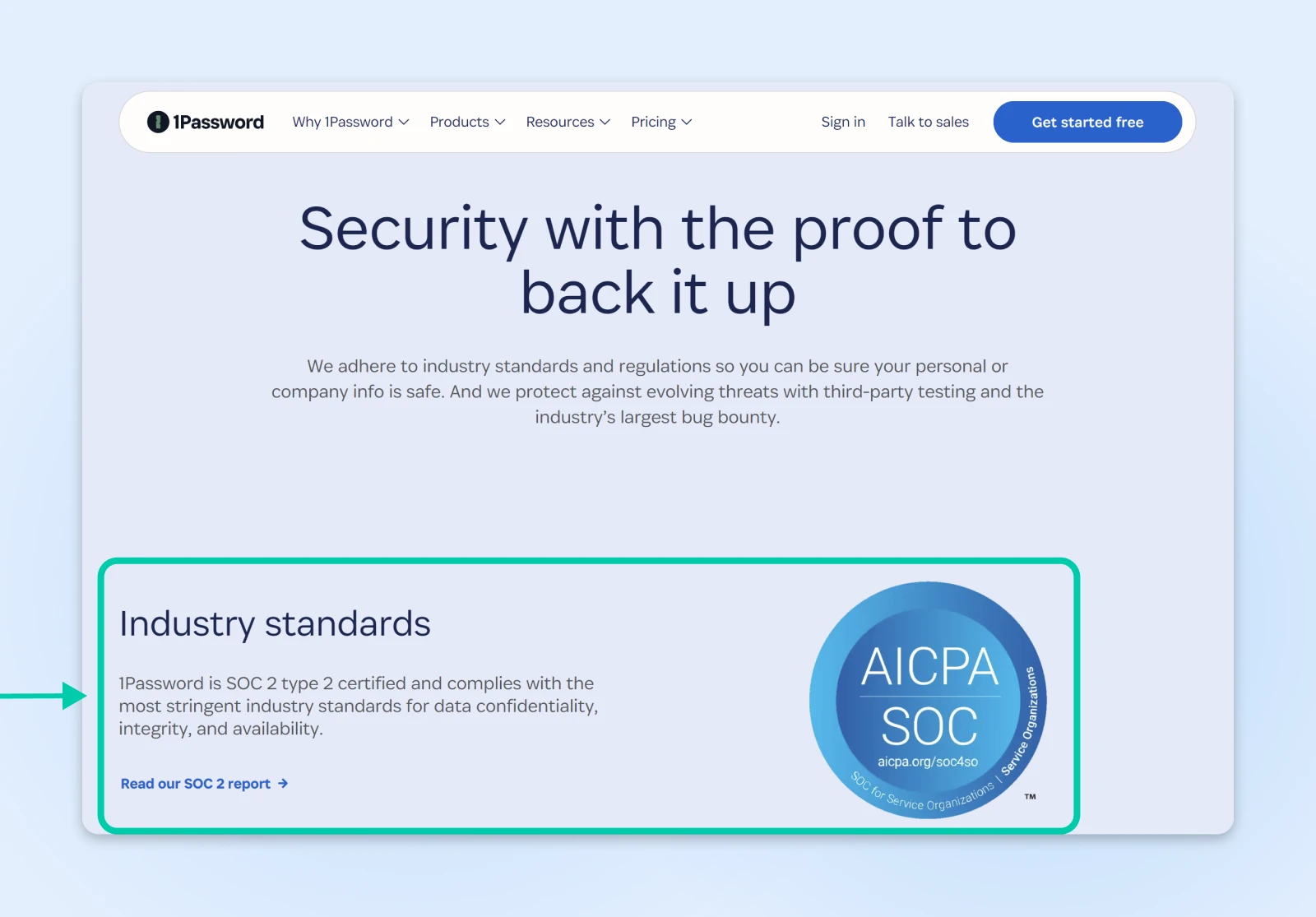
9. Team Up With Other Businesses
Forming strategic partnerships with other businesses in your industry can be a powerful way to build social proof.
Say you sell ice hockey skates. Teaming up with a well-known stickmaker can give your brand some instant credibility.
As long as you collaborate with businesses that target a similar audience — but don’t directly compete with you — this type of partnership should be a win-win.
Here are a few tips on making it work:
- Find your perfect match: Seek out businesses with aligned values and a shared target audience, but with a different product offering.
- Get creative with collaborations: Explore options like co-hosting events, cross-promoting products, or creating joint content for digital marketing.
- Make it positive for everyone: Partnerships only work when both businesses and their customers are getting something out of the relationship. You can do this by giving an exclusive discount to customers of your partner business, for example.
10. Get Your Staff Involved
Why do some companies seem to have fan clubs? Spoiler alert: it often starts with their own staff!
When your team genuinely believes in your products or services, their enthusiasm can be contagious. It also gives customers confidence that you’re not in the business of selling snake oil.
Not sure how to get the ball rolling? Here are some key pointers:
- Encourage your team to share their positive experiences: Whether it’s a positive work environment or something they love about your new product, make use of those good vibes!
- Make it shareable: Create engaging content, such as employee spotlights or behind-the-scenes glimpses that your team can easily share on social media.
- Recognize and reward your in-house ambassadors: Acknowledge and appreciate employees who actively promote your brand. Give your staff some extra perks if they’re brand ambassadors!
11. Create a Referral Program
A well-designed referral program can be a goldmine of social proof — driving new business while also rewarding your loyal customers.
People trust recommendations from people they know. By incentivizing referrals, you’re encouraging your happiest customers to spread the word and vouch for your brand.
For example, you could give a discount to people who get their friends to sign up for your service. Some brands offer rewards for sharing a recent purchase online.
There are loads of great platforms that can help you set up this type of program. Whichever solution you choose, be sure to follow these tips:
- Make it easy to participate: Minimize the steps required for customers to refer others and redeem their rewards. The less, the better.
- Offer two-way incentives: Reward both the referrer and the new customer. This could be discounts, free products, or exclusive perks.
- Actively promote your program: Mention it in email newsletters, on social media, and on your website. The more visibility it has, the more participants you’ll attract.
Take, for instance, the pet DNA company, Wisdom Panel. They offer $20 off DNA kits to both, existing and referred customers.
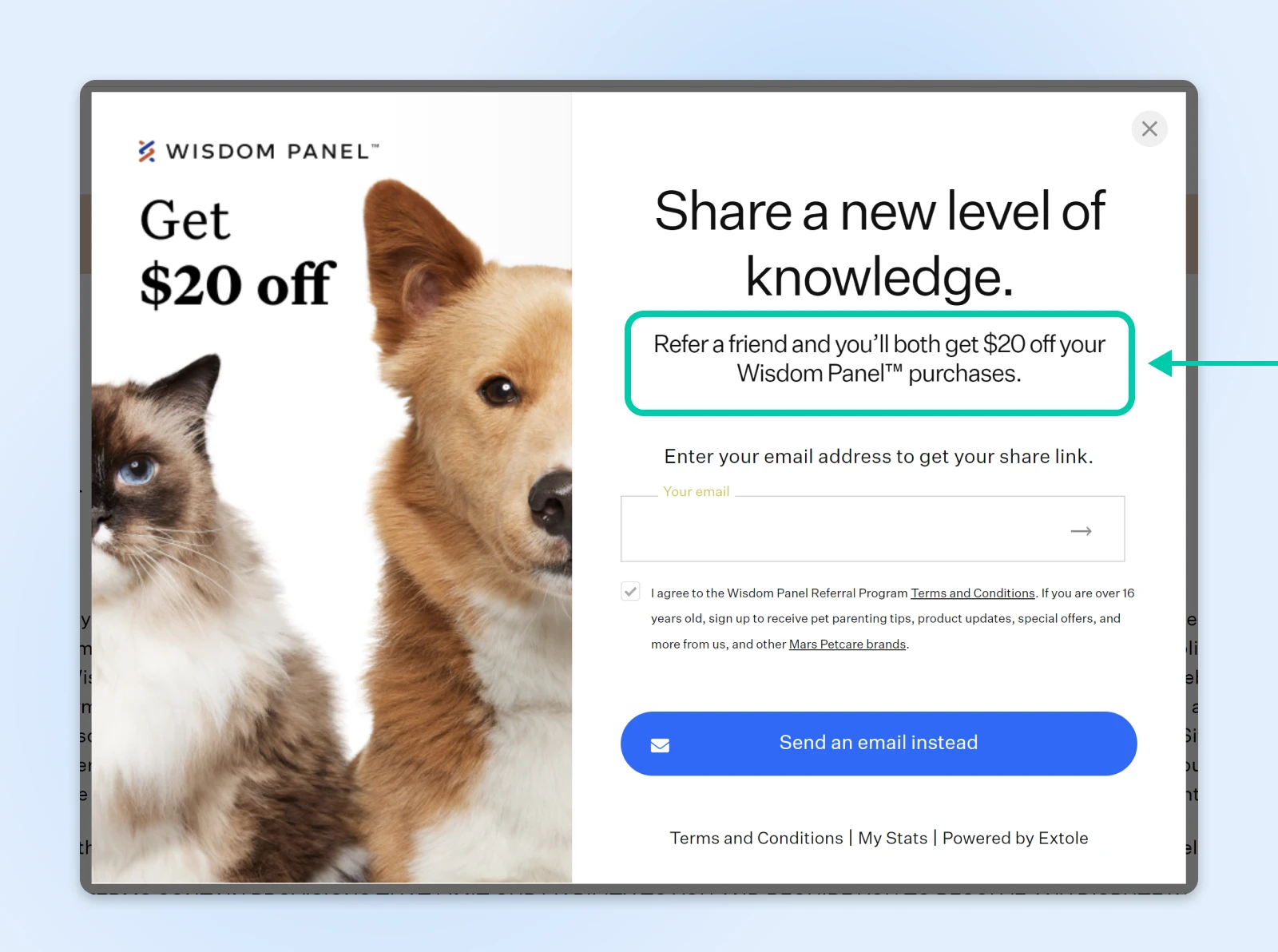
12. Share Some Success Stories Online
Everyone loves a good story. And as it happens, you can use them for social proof marketing.
Compelling case studies and customer success stories provide concrete examples of how your business has helped customers.
This type of content can humanize your brand and make your claims more relatable. New customers can see themselves in the experiences of others who faced similar challenges or had similar needs. And they can realize the value of your product or service in relation to them.
Writing case studies is a skill, so you might want to hire a pro. If you decide to do it yourself, make sure to:
- Focus on tangible results: Quantify the positive outcomes your customers achieved.
- Let your customers do the talking: Use direct quotes that capture authentic experiences.
- Make it visually appealing: Include plenty of eye-catching visuals. Infographics are great, and video interviews? Even better.
Social Proof: Your Secret Marketing Weapon
You probably weren’t expecting to take a class in social psychology today.
But as we’ve discovered, the principles of persuasion can be applied everywhere — including your business.
Although the impact of social proof isn’t always easy to measure on an individual level, the overall influence is undeniable. When you present overwhelming evidence to back up your pitch, customers will take notice. And that inevitably leads to increased conversions.
Looking for more ways to bump up your sales? Our team of marketing experts can help you with a wide range of services, from optimizing your website for search to creating social media content.
Plus, we can help you grab a catchy domain and speed up your site with our affordable hosting plans. Sign up today to unlock a massive upgrade!

Pro Services – Marketing
Get More Visitors, Grow Your Business
Our marketing experts will help you earn more traffic and convert more website visitors so you can focus on running your business.
Learn More



